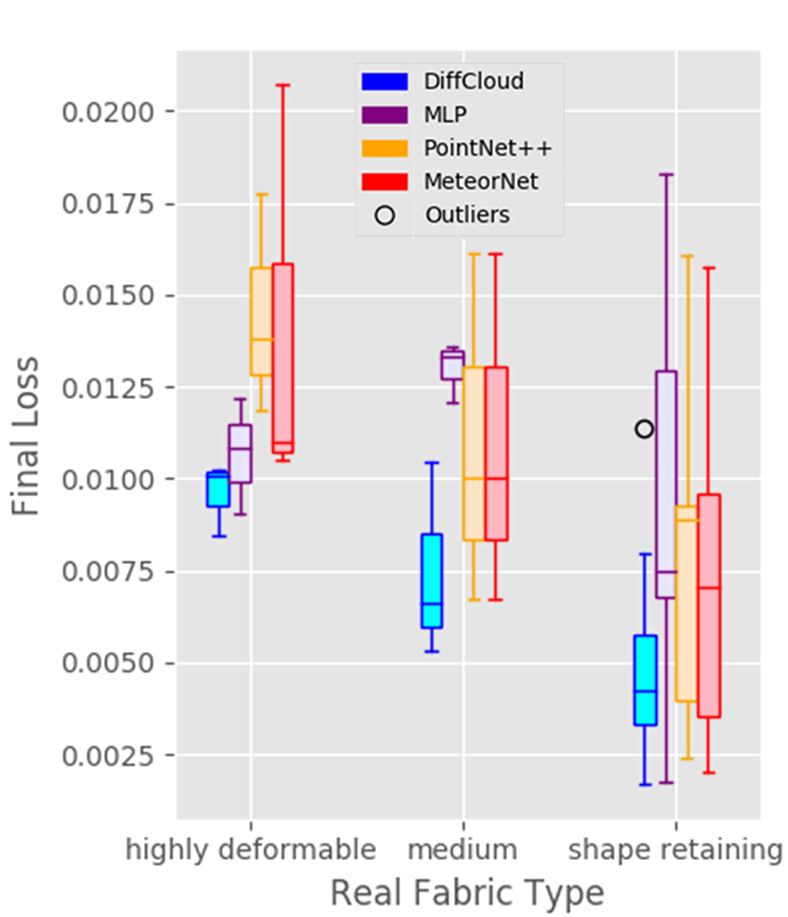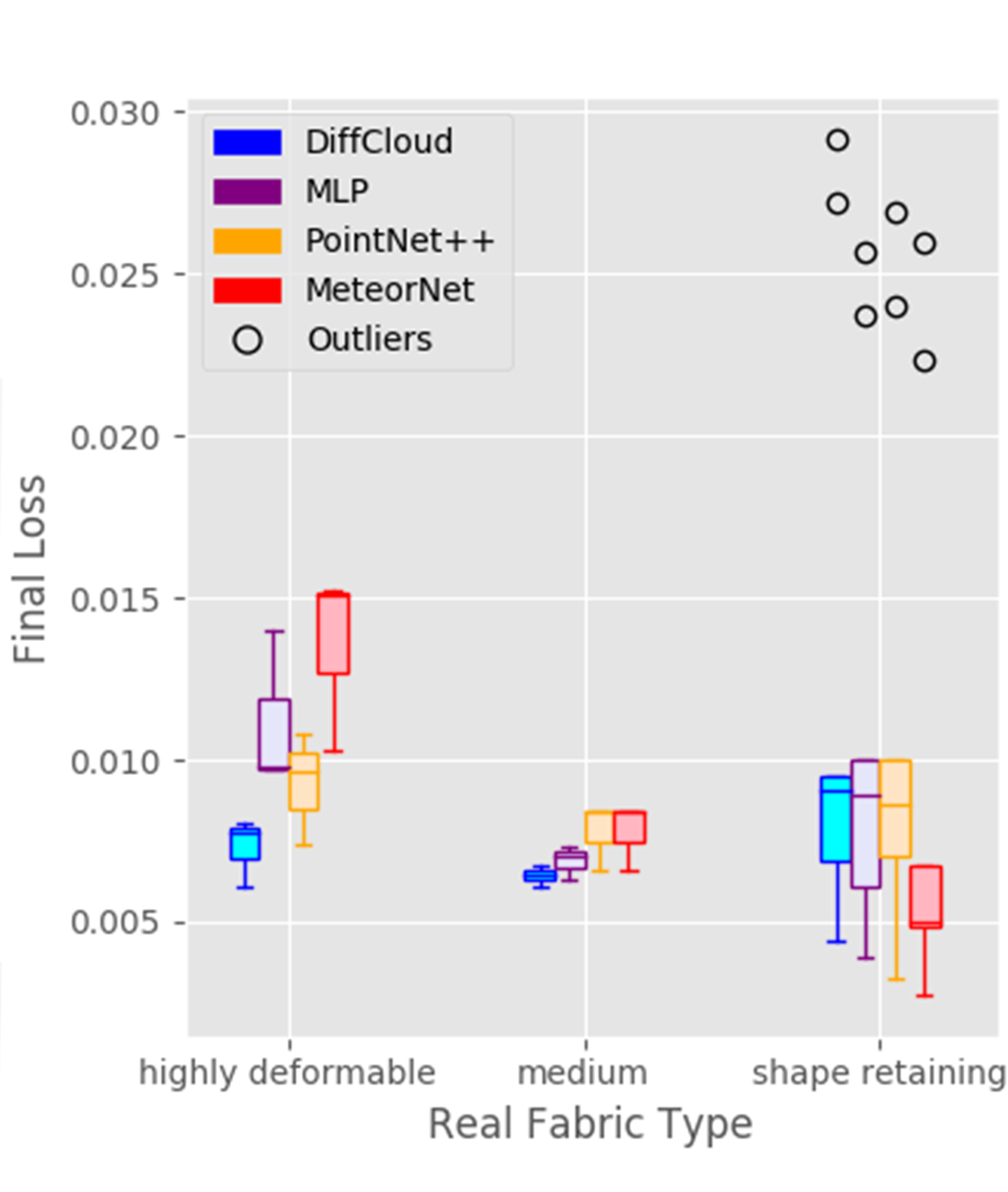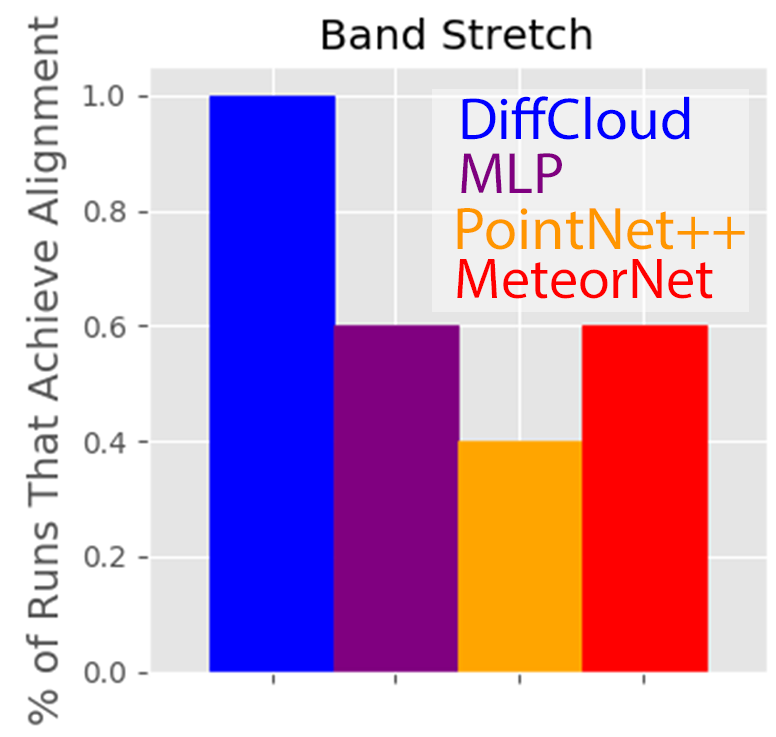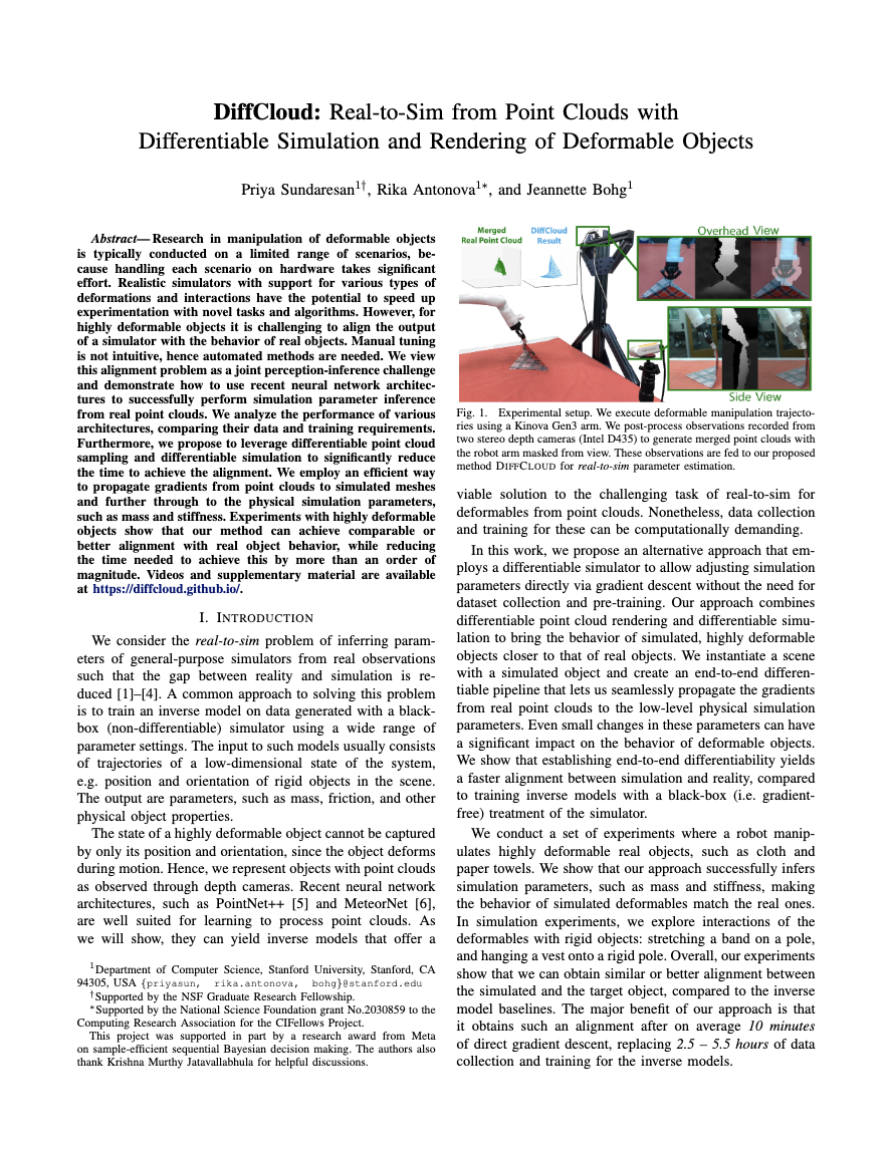TLDR: We introduce DiffCloud which combines differentiable simulation with differentiable rendering for real-to-sim parameter estimation of deformable objects from point clouds.

Abstract
Research in manipulation of deformable objects is typically conducted on a limited range of scenarios, because handling each scenario on hardware takes significant effort. Realistic simulators with support for various types of deformations and interactions have the potential to speed up experimentation with novel tasks and algorithms. However, for highly deformable objects it is challenging to align the output of a simulator with the behavior of real objects. Manual tuning is not intuitive, hence automated methods are needed. We view this alignment problem as a joint perception-inference challenge and demonstrate how to use recent neural network architectures to successfully perform simulation parameter inference from real point clouds. We analyze the performance of various architectures, comparing their data and training requirements. Furthermore, we propose to leverage differentiable point cloud sampling and differentiable simulation to significantly reduce the time to achieve the alignment. We employ an efficient way to propagate gradients from point clouds to simulated meshes and further through to the physical simulation parameters, such as mass and stiffness. Experiments with highly deformable objects show that our method can achieve comparable or better alignment with real object behavior, while reducing the time needed to achieve this by more than an order of magnitude.





